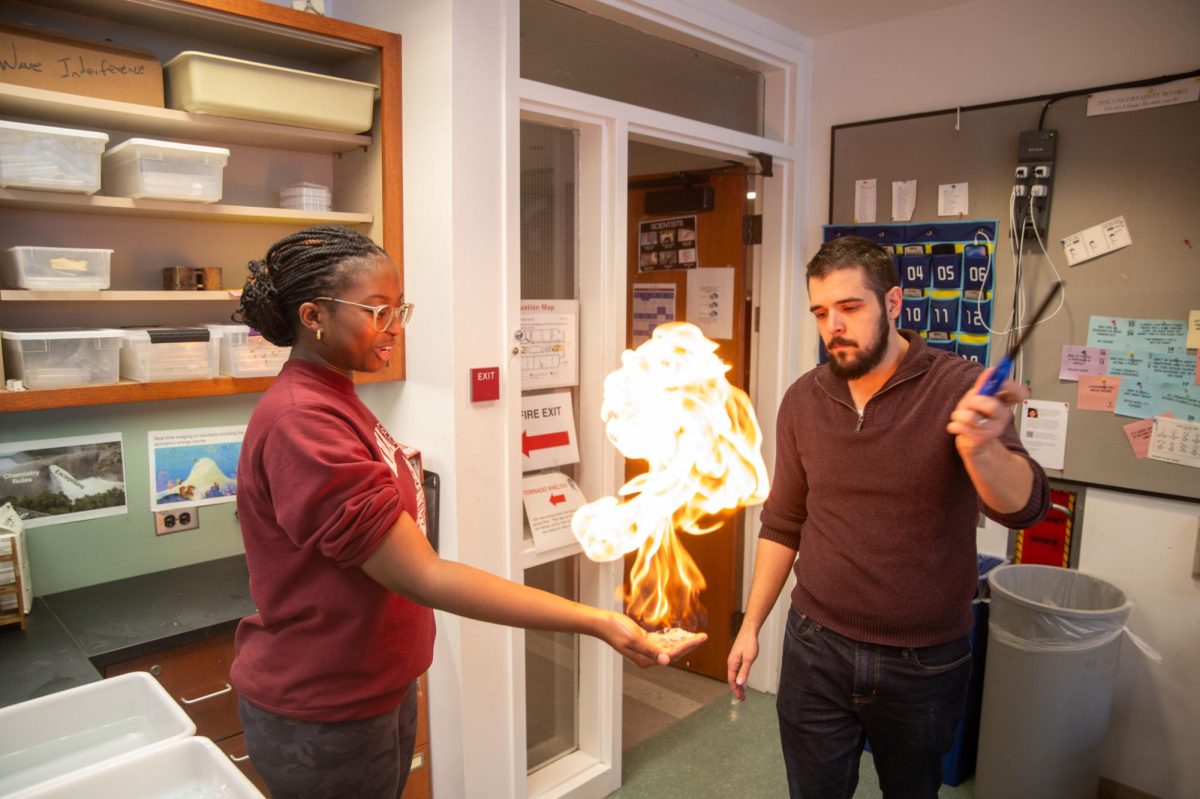Update February 13 6:21 p.m.: This story has been updated to correct that in the AT Chemistry class in 2015, not every student was white. There were no students from traditionally underrepresented backgrounds.
When Zachary Hund began teaching at Lab in 2015, he taught one course of AT Chemistry. Within that group, he noticed only two students were female, and there were no students from traditionally underrepresented backgrounds. The next year, he saw the gender disparity decrease, noticing the distribution was more even. Still, he noticed only one or two students of color in the class.
“It really made me sit and think because while I was initially happy to see that there were more female students interested in taking AT Chemistry, I was obviously lacking in other areas of diversity,” Dr. Hund, now the science department chair, said.
Over the past few years, Dr. Hund has seen a large increase in the number of students from traditionally underrepresented backgrounds enrolling in AT Chemistry. By implementing measures such as a gradeless system and conferencing, Dr. Hund has worked to create an inclusive learning environment in AT Chemistry, where students can feel empowered and comfortable taking on a challenging science course.
Multiple years later, the numbers have changed. Over one-quarter of all students enrolled in AT Chemistry are students from traditionally underrepresented backgrounds.
Dr. Hund described a “push and pull” in terms of why students want to take the course with one part coming from students and the other from teachers.
“The pull comes from making sure you run a course that students have heard good things about, that they know they can be themselves in, that they know they can be successful in, and that they know the material might be exciting,” Dr. Hund said.
Dr. Hund said the other part, the “push,” comes from encouraging students to have confidence in their own abilities.
“I’ve been saying ‘I see you, I hear you, I believe in you, and I want to encourage you to take this harder science class.’ I think it’s telling students ‘I know that you are capable of taking this course and doing well. I see you being successful, and I want you to see that as well,’” Dr. Hund said.
Junior Hana Javed chose to take AT Chemistry because she wanted to continue to explore her love of chemistry.
She has felt very comfortable in the class and appreciates the ways the class is run.
“I do really feel like it’s a safe and welcoming environment. I definitely feel like the class gives students more opportunities to show their strength and find out where their strengths lie,” Hana said. “I like how the grading isn’t solely based on how you do on exams because if a student has a bad day or they are just not as good at testing, they can still find ways to succeed. The class makes room for all kids with different ways of learning.”
Dr. Hund has noticed students have responded well to practices such as grade conferences, where a student can review all of the work they’ve done and have input to their final evaluation.
Dr. Hund said, “I think students like to know they have a voice. I think students like to be seen and get to kind of fight for themselves to say, ‘You know, this is everything I’m doing inside and outside of class. This is the amount of work I’m putting in, and this is what I think I should be getting out of it.’”
Hana agrees and said that she knows students appreciate having a chance to reflect and advocate for themselves.
Hana said, “It gives you the chance to say this is the grade I think I deserve. The class gives you a chance to express yourself and communicate how hard you’ve been working.”





















































